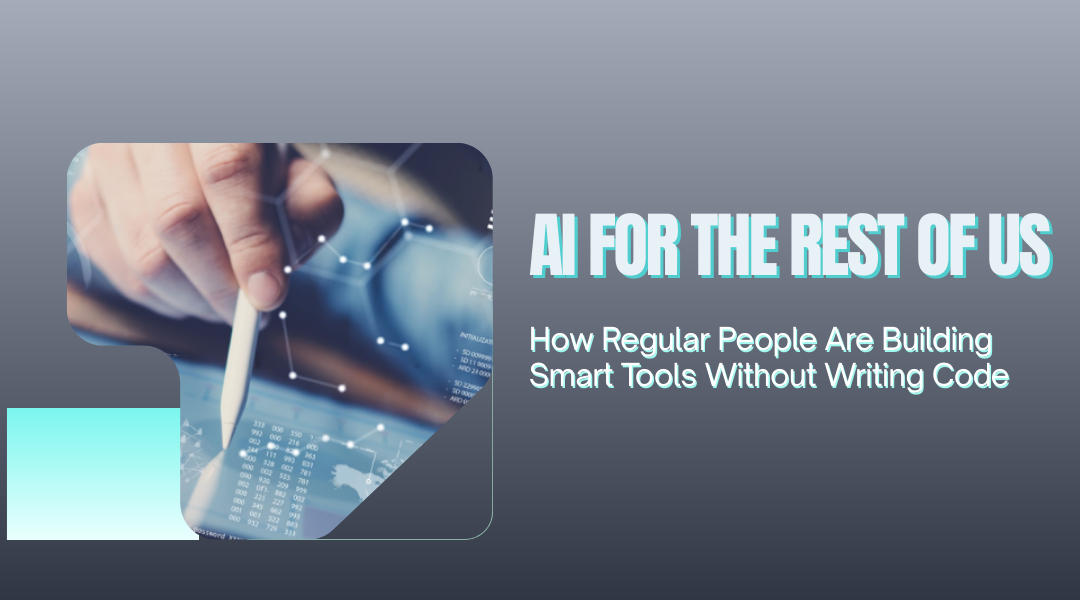Remember when building a website meant hiring a developer or learning HTML? These days, your grandma can whip up a slick online store between bingo games thanks to tools like Wix. Well, the same revolution is happening with artificial intelligence – and it’s about to change everything.
The Great AI Democratization
Last month, my neighbor Sarah – who still asks me how to attach files to emails – built a custom AI that predicts which vintage clothes will sell best in her thrift shop. No computer science degree. No coding. Just a drag-and-drop tool and her gut instinct about fashion.
This is the new reality:
- Teachers are creating AI tutors that adapt to each student’s learning style
- Small farmers are building crop disease detectors using just their phone cameras
- Local journalists are training AI to scan thousands of documents for investigative leads
The secret? A wave of “no-code” AI tools that work like digital Lego sets – snap together the pieces you need, no technical skills required.
How No-Code AI Actually Works (Without the Tech Jargon)
Imagine you’re making a sandwich:
- Old Way: Grow the wheat, raise the pigs, churn the butter – basically get a PhD in sandwich-making
- No-Code Way: Grab some quality bread, good ham, and fancy mustard – assemble something delicious in minutes
Popular tools breaking down barriers:
- Obviously AI: Like Canva for predictive analytics. Upload a spreadsheet, tell it what you want to forecast (sales, customer churn, etc.), and it builds the model for you.
- Lobe (Microsoft): Lets you train image recognition AI by simply uploading photos and clicking “this is a defective product” or “this looks good.”
- Zapier’s AI Features: Automatically tags customer emails as “urgent” based on past examples you flag.
Why This Changes the Game
- Speed: What took tech teams months now takes hours. A bakery owner I know built a flour inventory predictor over her morning coffee.
- Cost: Hiring an AI developer: $150k/year. No-code tools: Often free to start, with pro plans cheaper than your phone bill.
- Creativity: When non-tech people get their hands on AI, they solve different problems. Like the hairdresser who trained an AI to recommend hair colors based on skin tone – something Silicon Valley would never think to build.
The Dark Side (Because There Always Is One)
- Quality Control: Some no-code AI makes confident mistakes. One restaurant’s AI scheduler kept booking reservations during closed hours because no one told it about holidays.
- Data Privacy: Many platforms use your data to train their general models. Always check the fine print.
- The “Magic” Trap: It’s easy to trust the outputs blindly. One accountant almost filed incorrect reports because her AI tool misinterpreted some tax codes.
Getting Started: A No-BS Guide
- Start Small: Automate one annoying task first (sorting emails, tagging photos)
- Steal Ideas: Browse template galleries – most tools show what others have built
- Embrace the Mess: Your first attempts will be comically bad. My “AI wine recommender” kept suggesting boxed wine for anniversary dinners.
The Big Picture
We’re entering an era where AI isn’t just something we use – it’s something we shape to our needs. The next groundbreaking AI tool won’t necessarily come from some 22-year-old Stanford grad. It might come from a frustrated teacher, an overworked nurse, or a small-town shop owner who just needed a better way to do things.
